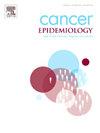Survival predictors of older cancer patients in Bangladesh: A multicenter study
IF 2.4
3区 医学
Q3 ONCOLOGY
引用次数: 0
Abstract
Introduction
The aging of the global population has led to an increased prevalence of cancer among older adults, particularly in Asia and in low- and middle-income countries. This demographic shift presents unique challenges to healthcare delivery, especially in developing countries like Bangladesh. This study aims to analyze survival outcomes and epidemiological patterns of elderly cancer patients in Bangladesh, addressing a critical knowledge gap in geriatric oncology in low- and middle-income countries
Methods
A 27-month prospective cohort study, conducted from October 2021 to January 2024 across three hospitals in Bangladesh, included 862 cancer patients aged 60 and older, 581 of whom completed the full study period. Demographic data, medical history, physical status, and treatment records were collected through questionnaires and follow-up. Survival analysis was performed using the Kaplan-Meier method and Cox proportional hazards regression models.
Results
Of 581 patients with a mean age of 65.9 years, 67.47 % died during the study. Lung cancer was the most common diagnosis (43.5 %), while breast cancer patients had the highest survival rate of the cohort (56.61 %). Mortality risk slightly increased with age (HR 1.02, 95 % CI:1.01, 1.04, p = 0.04), while sex had no significant impact. Advanced stage cancer increased mortality risk (HR 1.67, 95 % CI:1.10, 2.54, p = 0.01), while adequate food intake (HR 0.47, 95 % CI:0.31, 0.72, p = 0.00), better mobility (HR 0.62, 95 % CI: 0.40, 0.94, p = 0.02), and positive health perception (HR 0.54, 95 % CI:0.38,0.75, p = 0.00), were linked to improved survival. Treatment with more than two drugs alongside platinum-based chemotherapy increased mortality (HR 2.03, 95 % CI:1.14, 3.63, p = 0.01) compared to non-platinum or oral drugs, while a history of post-diagnosis surgery was associated with reduced mortality. Comorbidities and BMI were not significant in the multivariate analysis.
Conclusion
The study underscores the need for comprehensive, individualized care plans for older cancer patients, considering both the type of cancer and the patient's overall health. Future research should focus on optimizing treatment strategies and care models tailored to older cancer patients in resource-limited settings.
孟加拉国老年癌症患者的生存预测因素:一项多中心研究
全球人口老龄化导致老年人癌症患病率上升,特别是在亚洲和中低收入国家。这种人口结构的变化给医疗保健服务带来了独特的挑战,特别是在孟加拉国等发展中国家。该研究旨在分析孟加拉国老年癌症患者的生存结果和流行病学模式,以解决中低收入国家老年肿瘤学的关键知识缺口。方法一项为期27个月的前瞻性队列研究,于2021年10月至2024年1月在孟加拉国的三家医院进行,包括862名60岁及以上的癌症患者,其中581人完成了完整的研究期。通过问卷调查和随访收集人口统计资料、病史、身体状况和治疗记录。生存率分析采用Kaplan-Meier法和Cox比例风险回归模型。结果581例患者,平均年龄65.9岁,67.47% %在研究期间死亡。肺癌是最常见的诊断(43.5 %),而乳腺癌患者的生存率最高(56.61 %)。随着年龄的增长,死亡风险略有增加(HR 1.02, 95 % CI:1.01, 1.04, p = 0.04),而性别没有显著影响。晚期癌症死亡风险增加(HR 1.67, 95 % CI: 1.10, 2.54, p = 0.01),而充足的食物摄入量(HR 0.47, 95 % CI: 0.31, 0.72, p = 0.00),更好的流动性(HR 0.62, 95 % CI: 0.40, 0.94, p = 0.02),和积极的健康观念(HR 0.54, 95 % CI: 0.38, 0.75, p = 0.00),与改善生存。与非铂类或口服药物相比,两种以上药物联合铂类化疗增加了死亡率(HR 2.03, 95 % CI:1.14, 3.63, p = 0.01),而诊断后手术史与死亡率降低相关。在多变量分析中,合并症和BMI无显著性差异。结论:该研究强调了在考虑癌症类型和患者整体健康状况的情况下,需要对老年癌症患者制定全面、个性化的护理计划。未来的研究应侧重于优化治疗策略和护理模式,以适应资源有限的老年癌症患者。
本文章由计算机程序翻译,如有差异,请以英文原文为准。
求助全文
约1分钟内获得全文
求助全文
来源期刊

Cancer Epidemiology
医学-肿瘤学
CiteScore
4.50
自引率
3.80%
发文量
200
审稿时长
39 days
期刊介绍:
Cancer Epidemiology is dedicated to increasing understanding about cancer causes, prevention and control. The scope of the journal embraces all aspects of cancer epidemiology including:
• Descriptive epidemiology
• Studies of risk factors for disease initiation, development and prognosis
• Screening and early detection
• Prevention and control
• Methodological issues
The journal publishes original research articles (full length and short reports), systematic reviews and meta-analyses, editorials, commentaries and letters to the editor commenting on previously published research.
 求助内容:
求助内容: 应助结果提醒方式:
应助结果提醒方式:


